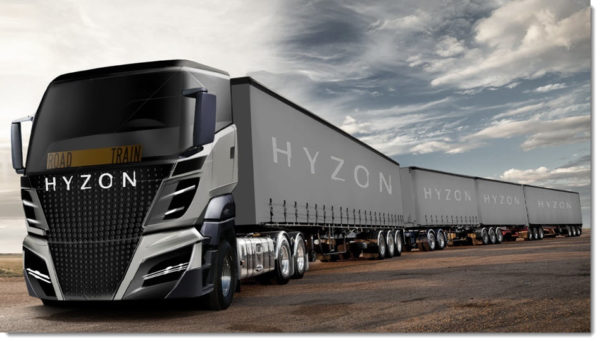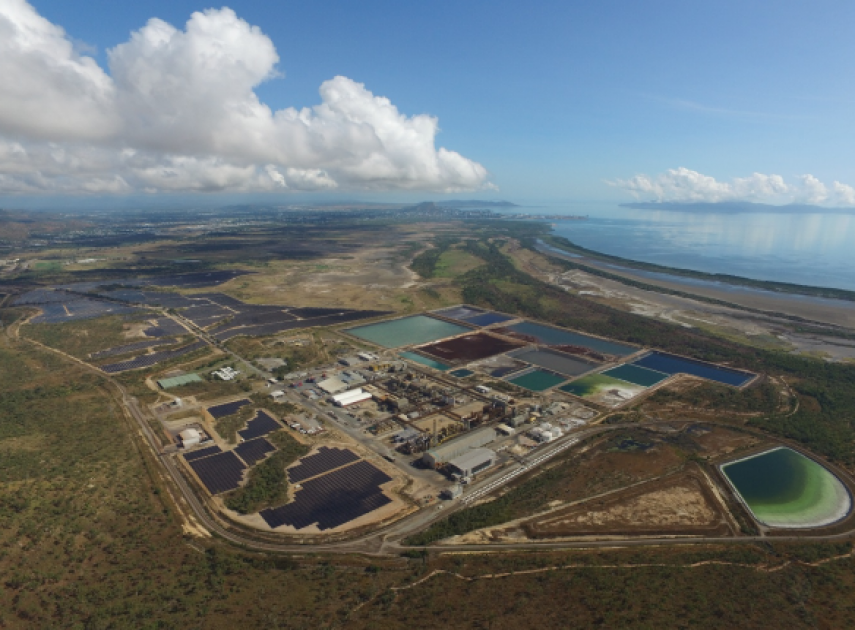There are many pieces to a green hydrogen economy. This morning, the Clean Energy Finance Corporation (CEFC) announced its first investment through the Advancing Hydrogen Fund: $12.5 million to help Korea Zinc subsidiary Ark Energy Corporation produce green hydrogen to power the world’s heaviest fuel-cell electric trucks soon set to ply the 30 kilometre zinc concentrate-to-ingot route from Townsville Port to Sun Metals Refinery, and back.
It’s a demonstration project for the functionality and versatility of a hydrogen hub; a demand incubator for hydrogen; a use case for electric vehicles in the hard-to-abate heavy transport sector, along with the necessary refuelling infrastructure; and a precursor to Ark Energy exporting green hydrogen to Asia.
First things first: CEFC Ian Learmonth said in a statement announcing the landmark investment, “Australia’s ability to continue reducing its emissions depends on how well we tackle those areas of the economy that are harder to abate.”
The transport sector ranks as Australia’s third largest emitter of greenhouse gases, responsible for a whopping 17.5% of emissions.
And as Learmonth points out, “Trucks that work in the heavy transport sector have ultra-heavy payloads and typically operate around the clock, so cannot be off the road for several hours to recharge.”
Hydrogen fuel-cell exchange is seen as the fastest-delivery, high-density energy source to power such workhorses — in this case, Ark Energy will acquire five Hyzon Motors’ 140-tonne rated, triple-trailer hydrogen-fuel-cell powered trucks and lease them to its sister company Townsville Logistics (also a subsidiary of Korea Zinc).

Image: Hyzon Motors
The five behemoths, which will emit only water vapour, are expected to abate about 1,300 tonnes of CO2 per year, and inspire many more such investments in the resources industry.
They will operate on a back-to-base model where that base is Ark Energy’s SunHQ hydrogen hub, which will be equipped with a 1 MW PEM electrolyser, compressors, storage and refuelling infrastructure.
Green hydrogen supply
SunHQ is expected to produce around 158 tonnes of green hydrogen per annum, powered by renewable energy from the Sun Metals 124 MWac solar farm at its zinc refinery.
Hydrogen excess to the Hyzon fleet needs will be made available to other customers in the Townsville region, kickstarting uptake of the green fuel and increasing the potential for decarbonisation.
“Everything we learn about hydrogen use in heavy transport,” from this project, said Rupert Maloney, CEFC Head of Hydrogen, “will help others who are also keen to improve their sustainability despite similar challenges.
“By demonstrating the suitability of what are expected to be the largest hydrogen fuel-cell electric trucks in the world, this investment has the potential to spearhead further take up across the heavy transport sector, including mining and other industries such as rail, marine and even aviation.”
Hyzon, a US-based company, in which Korea Zinc also has a minority shareholding, has also developed rail and aviation-fuelling systems from its core Horizon hydrogen technology.
In Australia, it is so far supplying Fortescue Metals with hydrogen-fuel-cell coaches to transport its workforces in the Pilbara; this month it sold 10 zero-emissions coaches with 700 km range, designed for regional and inter-city travel to a customer in Brisbane; in July it contracted to supply Wesfarmers with two hydrogen-powered Hymax-450 prime movers, and it has a number of other deals in the offing.
Although Hyzon vehicles sold in Australia will initially be supplied from its international factories, such as its Netherlands-based facility, the company says it “expects to localise production of key platforms in Australia from 2022”.
Taking green hydrogen to extremes
Ark Energy has declared its intention to become an “extreme user” of hydrogen, “making it pervasive across the group’s businesses”, said CEO Daniel Kim in today’s statement.
He also underscored the company’s intention to become a demand creator for green hydrogen, and said, “To help build demand for hydrogen, we need to supply it as cheaply as possible, which is why the CEFC’s support is so critical.
“Customers can leverage our production and refuelling infrastructure at SunHQ, and won’t need to pay the capital cost of conversion away from diesel,” he added. “It all adds up to kickstarting the development of North Queensland’s local hydrogen economy.”
The Ark Energy green transport and refuelling ecosystem is the first hydrogen project to be supported by both the CEFC and the Australian Renewable Energy Agency which is contributing a conditional $3.02 million — to be paid upon the commissioning of the refuelling facility and delivery of the five fuel-cell electric trucks, which are expected to arrive in Australia in December 2022.
ARENA CEO Darren Miller said today, “Ark’s first-of-a-kind deployment is a great opportunity to highlight the potential of ultra-heavy fuel cell electric trucks in Australia, which has significant replication potential and could fast track the reduction of emissions by using renewable hydrogen not only in heavy transport, but the entire resources supply chain domestically.”
Grants, loans and heavy automobiles to make hydrogen fly
In mid-2020 the SunHQ renewable energy hub also received a $5 million grant from the Queensland Government Hydrogen Industry Development Fund.
At that time, the Sun Metals Solar Farm was supplying a third of the zinc refinery’s energy needs, with the rest of its daytime output intended for sale into the energy market, but system strength issues were plaguing the grid in North Queensland, and export of renewable energy from Haughton and Sun Metals solar farms, and from Emerald Wind Farm, was under threat of being slashed to zero.
Green hydrogen production achieved through self-consumption of its renewable generation turns out to be the most economically promising approach for Sun Metals, which joined the RE100 list of companies late last year, pledging to be 100% powered by renewables by 2040, with an interim target of 80% by 2030. It has also declared its intention to become the first refinery in the world to produce green zinc.
At the CEFC, Maloney says that investment in Ark Energy infrastructure, “enables us to lift our ambitions even further and support emissions reduction in the carbon-intensive zinc supply chain”.
This content is protected by copyright and may not be reused. If you want to cooperate with us and would like to reuse some of our content, please contact: editors@pv-magazine.com.









By submitting this form you agree to pv magazine using your data for the purposes of publishing your comment.
Your personal data will only be disclosed or otherwise transmitted to third parties for the purposes of spam filtering or if this is necessary for technical maintenance of the website. Any other transfer to third parties will not take place unless this is justified on the basis of applicable data protection regulations or if pv magazine is legally obliged to do so.
You may revoke this consent at any time with effect for the future, in which case your personal data will be deleted immediately. Otherwise, your data will be deleted if pv magazine has processed your request or the purpose of data storage is fulfilled.
Further information on data privacy can be found in our Data Protection Policy.